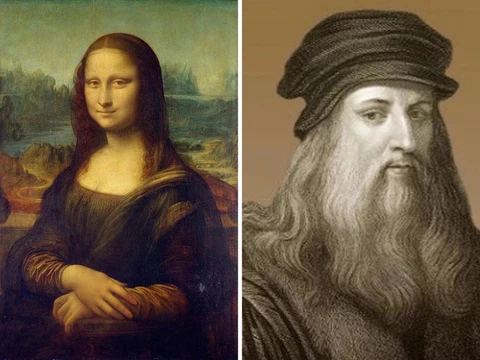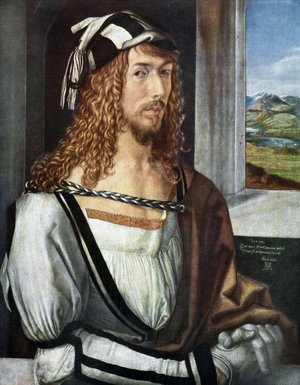- Home
- Art History
- Renaissance Art
Renaissance Art
Introduction to Renaissance Art
The Renaissance movement in art and culture placed a significant emphasis on humanism, a concept that emphasized the worth and potential of the individual. Emerging in the late 14th century, humanism rejected the dominance of ecclesiastic and aristocratic authority and valued the liberal arts.
"Renaissance" is the French word for rebirth. During the Renaissance period a rebirth of learning and a proliferation of the arts took place. Renaissance art emerged in Italy, in the late 14th century, inspired by the rediscovery of Classical philosophy, literature, and art. Italians sought to revive their former glory.
Innovation in the Renaissance
Perspective was the hallmark of Renaissance technique, along with developments in materials and methods, including oil painting and fresco. These techniques allowed for greater detail and vibrancy in works, revolutionizing how subjects and scenes were portrayed. New developments in mathematics supported the advances in linear perspective.
Accompanying new ideas were new materials such as oil paints, manufacture of graphite pencils, and lost wax casting.
Artists sought to capture human experience and emotion as well as explore and portray the mysteries of nature. While portraits reflected a new sense of self worth for individuals, religious subjects remained common themes. Portrayals of myths were used for their moralizing messages.
Artists achieved higher social status, equaling the upper echelons of society. The genius of Leonardo da Vinci was recognized in several prominent cities of the period.
|
Four Renaissance Breakthroughs |
 | |
|
Triangle configuration draws the viewer's eye to the woman's head. |
Oil on stretched canvas became the preferred medium. Minerals with vibrant colors such as lapis lazuli and iron oxide, were ground into fine powder and mixed with turpentine and oil to be applied as oil paint. |
Linear perspective helped artists lay out the optical effect of objects receding in the distance. This system relies on the vanishing point on the horizon. Adding to the optics, artists reduced the size of objects, muted colors, and blurred detail as objects got farther away. | |
Chiaroscuro (light and dark) referred to the new technique for modeling forms in painting by which lighter parts seemed to emerge form darker areas, showing rounded forms. |
Rigid profile portraits and grouping of figures on a horizontal grid in the picture's foreground gave way to a more three-dimensional "pyramid configuration." |
Characteristics of Italian Renaissance Art
 | |
|
Italian Renaissance art is renowned for its emphasis on realism, balanced compositions, and its deep connection to classical antiquity. Artists like Leonardo da Vinci, Michelangelo, and Raphael perfected the use of perspective, bringing three-dimensional depth to their paintings, a stark shift from the flat figures of medieval artwork. |

Notable Works of the Italian Renaissance
Leonardo
da Vinci’s ‘Mona Lisa’ and ‘The Last Supper’ stand as epitomes of
Renaissance ideals—harmony, balance, and a realistic portrayal of human
subjects. Michelangelo’s sculptures like ‘David’ and his Sistine Chapel
ceiling frescoes demonstrate mastery of human anatomy and depth of
expression.
Leonardo da Vinci’s masterpiece, the Mona Lisa, attracts about six million people to the Louvre each year. Does the Mona Lisa have some hidden power?
|
The Last Supper - by Leonardo da Vinci, c. 1503 Orthogonal lines going toward a vanishing point aim the viewer's eye to the central figure. |
 |
Exploring the Northern Renaissance
While the Italian masters focused on humanism and antiquity, the Northern Renaissance artists in Flanders, Germany, and the Netherlands emphasized meticulous detail, vivid colors, and complex iconography in their works, influenced by the Gothic tradition.

Self Portrait
Albrecht Dürer
c. 1498

Distinguishing Features of the Northern Renaissance
Artists such as Jan van Eyck and Albrecht Dürer are celebrated for their precision in oil painting, which allowed them to achieve incredible texture and realism, particularly in their portrayal of materials like metal, glass, and fabric.
|
The Arnolfini Marriage by Jan van Eyck c. 1434 |
Comparative Analysis: Italian vs. Northern Renaissance
Fundamentally, the Italian Renaissance leaned towards the idealized forms of the human body and harmonious scenes, while the Northern Renaissance exhibited a fascination with naturalism, evident in the intricate details of everyday life and landscapes.
Patronage and Art's Intended Audience
In Italy, art was commonly commissioned by the Church and wealthy patrons like the Medici family of Florence. In contrast, Northern artists often served more diverse clientele, including the middle classes, which influenced the thematic variety in their works.
Renaissance Art's Influence on Modern Art
The
innovations in technique and style during the Renaissance period set
the groundwork for future art movements. The realistic portrayal and
emotional depth found in Renaissance art paved the way for the Baroque
period and beyond.
Lesson Ideas for Art Teachers
The Renaissance, a pivotal period in the history of art, marked a profound cultural shift from the medieval ages to the modern era, profoundly influencing the aesthetics, themes, and techniques of Western art. This article will explore the key features of Renaissance art, distinguishing between the Italian Renaissance and the Northern Renaissance, to assist educators in crafting comprehensive art lesson plans that inspire and educate high school students.
**Teaching Renaissance Art in Schools**
Creating an art lesson plan that covers Renaissance art can provide valuable lessons in cultural history, artistic technique, and aesthetic appreciation. High school teachers can utilize reproductions of famous paintings to discuss the evolution of artistic methods and themes.
**Activities and Projects for Students**
Educators can encourage students to create their own art pieces inspired by either the detailed, vibrant style of the Northern Renaissance or the balanced, human-centric approach of the Italian Renaissance. Projects might include drawing, painting, or sculpting.
**Examining Contemporary Relevance**
By studying Renaissance art, students can also explore how these past ideals and artistic explorations reflect and differ from today's cultural and artistic norms, inspiring critical thinking about the role of art in society.
**Conclusion**
Understanding Renaissance art, with its rich tapestry of innovation, philosophical exploration, and exquisite craftsmanship, can radically enhance a student’s appreciation of art’s role in shaping human thought and societal values. For high school teachers, integrating these insights into their curriculum will not only enlighten but also inspire their students.
**Integrating Italian and Northern Renaissance Art into Curriculum**
Teachers can design modules that compare specific artists or themes across the Italian and Northern Renaissances. This approach helps students understand the broader cultural and historical context, enhancing their analytical skills.
**Possible Field Trips and Virtual Tours**
To enrich the learning experience, educators can organize trips to local museums that house Renaissance art or conduct virtual tours of museums such as the Louvre or the Vatican Museums, offering students a visual connection to the historical topics discussed in class.
**Further Reading and Resources**
For those interested in delving deeper, a wealth of resources is available. Recommended texts include Giorgio Vasari’s "Lives of the Artists" for biographies of Italian masters, while "The Art of the Northern Renaissance" by Craig Harbison provides insights into Northern artists.
**Encouraging Artistic Exploration**
Teachers might set up a classroom gallery where students can display their Renaissance-inspired works, fostering an environment of appreciation and critique, much like the salons of the past. This not only showcases student creativity but also builds confidence in artistic expression.
**Understanding the Role of Art in Cultural Exchange**
A lesson could be devoted to how Renaissance art influenced and was influenced by non-European cultures through trade and exploration, highlighting the interconnectedness of global historical movements.
**Using Renaissance Art to Teach Historical Context**
Linking art to historical events such as the fall of Constantinople or the discovery of the New World can help students grasp the interconnected nature of art and history, providing a richer educational experience.
**Art Technique Workshops**
Practical workshops can help students learn the specific painting or sculpting techniques used by Renaissance artists, such as fresco-making, which can be an engaging and informative hands-on activity.
**Discussion and Debate**
Facilitate discussions or debates on the influence of Renaissance art on modern societal values or on the comparison of artistic expressions across different cultures and epochs. This encourages students to articulate their thoughts and engage with the material critically.
**Impact on Subsequent Art Movements**
The article can conclude by highlighting the direct line of influence from Renaissance art to later movements such as Realism, Impressionism, and Modernism, helping students to see the continuity of artistic evolution.
**Summarizing Key Learnings**
As a final exercise, students could be tasked with presenting what they have learned about either Italian or Northern Renaissance art through a creative project, a paper, or a presentation, consolidating their understanding and sharing insights with their peers.
By utilizing these detailed insights and methodologies, high school teachers can deeply engage students with the rich and varied history of Renaissance art, fostering an environment of both intellectual curiosity and creative expression.
Okay, so now I've put on some ads from Amazon - from which I may earn a few cents. (2025)



